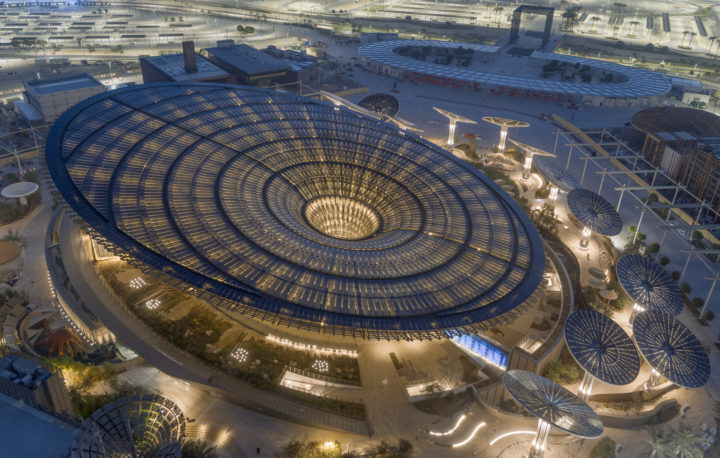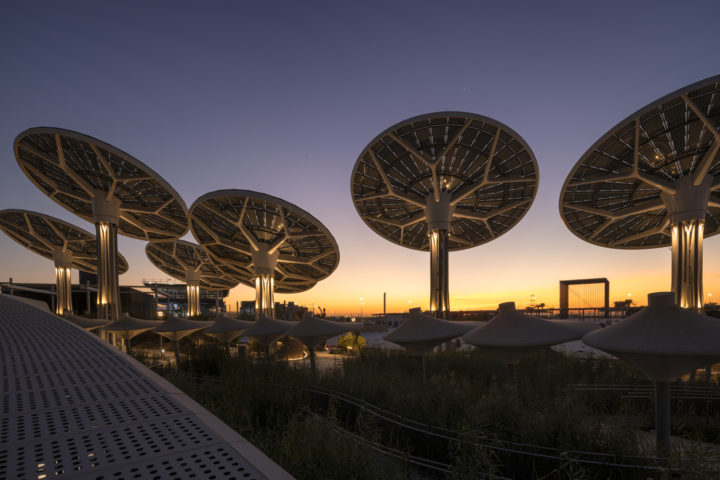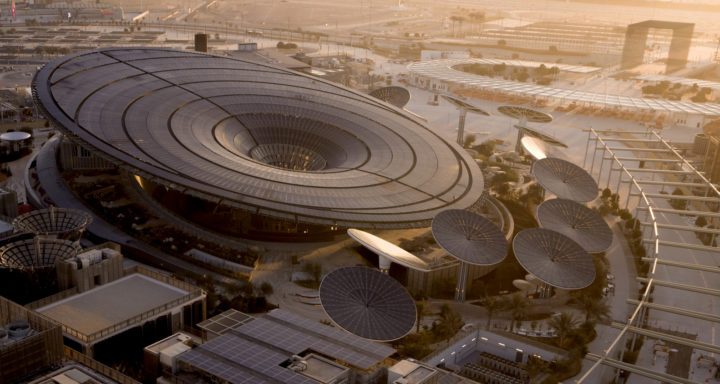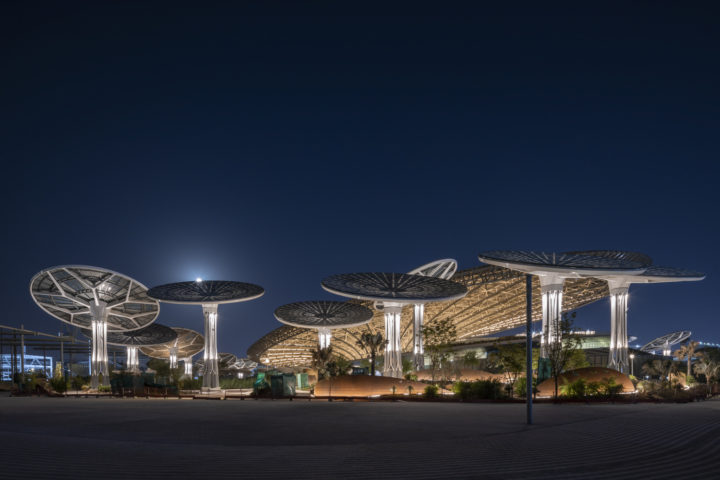A multisensory coffee for the tea ceremony
Taking over the ground and first floors of a modern low-rise in Osaka, Tokyo-based studio I IN has created a coffee shop that is futuristic,…
The sustainability pavilion, named Terra, is one of the three main themes – sustainability, mobility, opportunity – of Expo 2020 Dubai which will end on March 31, 2022. It was designed by Grimshaw Architects to condemn environmental emergency activities by emphasizing human influence and is expected to be a catalyst for collective action. The building, which is part of the perennial projects, is set to become a science center after the event. It should operate independently for the supply of energy and water.

The design of the pavilion is inspired by natural processes such as photosynthesis. Its morphology is optimized for the collection of water, sunlight and condensation. The roof is covered with photovoltaic panels with a span of 130 meters. 18 “Energy Trees” around it provide shade and capture solar energy. Much of the 6,300 square meters of exhibition space is located in the basement, thus benefiting from the thermal insulation of the earth. The funnel structure stimulates ventilation and allows natural light to enter the interior of the pavilion.


The water management system collects the condensed water, which is filtered and disinfected. Mixed with desalinated water collected on site, it is used as drinking water for the pavilion. The volume of water is directly proportional to the outdoor air temperature and the number of tourists. The area surrounding the pavilion, designed by local landscape architects, Desert INK, includes several demonstration gardens showing new crops adapted to arid climates, which may stimulate the development of a new food production system in the area.

In addition to demonstrating sustainability in a harsh environment, the pavilion also provides visitors with an immersive experience that traces the relationship between man and nature, and encourages exchanges around the environmental impact of our contemporary society. Created by Thinc Design and the educational NGO Eden Project, the pavilion’s content explains the main issues and concepts of sustainability through interactive installations.

Photo credit: Expo 2020 Dubai
Architect : Grimshaw Architects